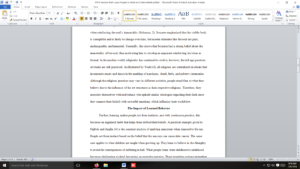Science-based evidence
Why will people defend their beliefs even in the face of opposing evidence? Why will they come up with reasons to defend their internalized beliefs?
Head-on attempts to persuade people to change their minds about their beliefs by providing them with science-based evidence that contradicts their beliefs sometimes “backfires”. This backfiring can range from ignoring scientific evidence to using that evidence to support their original beliefs. This has been shown to occur with topics as diversified as climate change, creationism, afterlife, religion (and the four horsemen) 15th and 16th century refusals to believe that the earth was not the center of the universe, etc. This question is not asking specifically about “soul beliefs”, but about internalized beliefs in general. Be sure to include references for The Anatomy of Internalized Beliefs, Terror Management Theory, After Life & Out of Body, Big Ideas and Big Controversies and the Psychology and Scientific Thinking Chapter.
In a 3-page double-spaced paper (12 pt, New Times Roman font) write a well-documented (cite readings and lectures) essay that demonstrates in-depth knowledge from the course that bears on the topic of the need to protect and defend certain worldviews and how these relate to fighting evolution in the school system. Develop this theme in a logical and cohesive essay with your conclusions indicated at the end of the essay. List the citations of the lectures and readings that you used in crafting your essay.
——————————
Grading Rubric
____ 25 pts in-depth analysis of the topic with course information
____ 15 pts Logical & cohesive essay with proper grammar and spelling
____ 5 pts in-text-citations with lecture/reading name and reference page
____ 5 pts Address all of the lecture material indicated in the prompt
____ TOTAL POINTS
I have some links and articles if you think that can help you!
Answer preview
Further, learning makes people act from instincts, and with continuous practice, this becomes an ingrained habit that helps them defend their beliefs. A practical example given by Ogilvie and Anglin (4) is the constant practice of applying sunscreen when exposed to the sun. People act from instinct based on the belief that the sun rays can cause skin cancer. The same case applies to what children are taught when growing up. They learn to believe in the Almighty to avoid the consequences of suffering in hell. What people learn from childhood to adulthood becomes challenging to shed, becoming an everyday practice. These repetitive actions strengthen people’s beliefs, where Hamilton (1) discloses that primary caregivers, religious leaders, and teachers play a significant role in teaching children to uphold good morals.
[993 Words]

Science-based evidence


